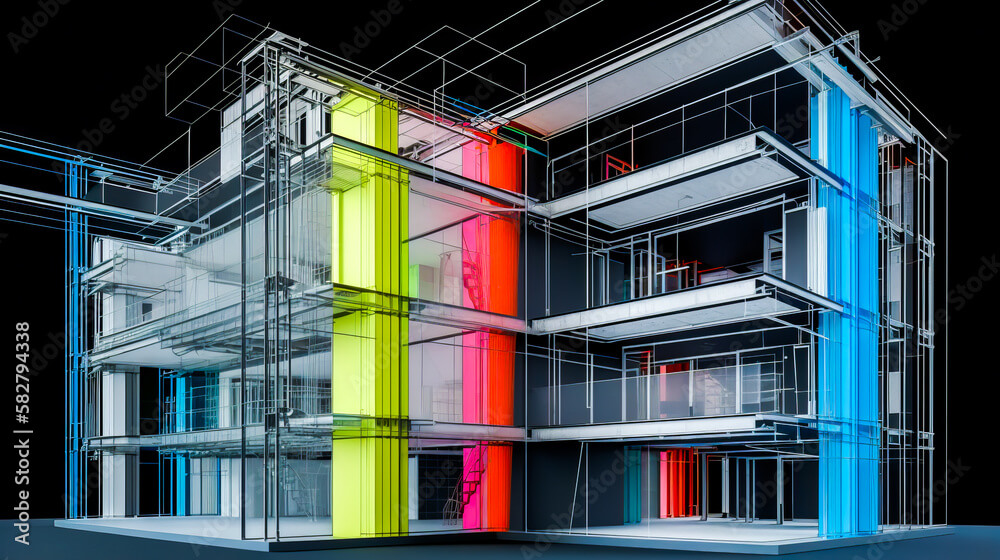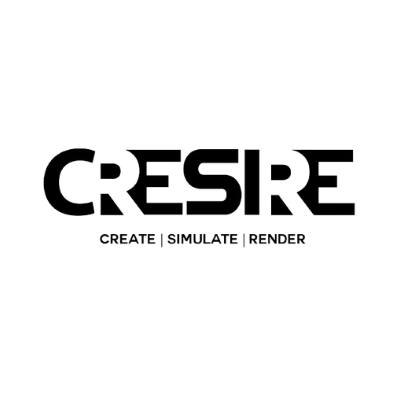Step-by-Step Process of 3D BIM Modeling in Design Development
Ultimate Guide on 3D BIM Modeling Process for Design Development

Introduction to 3D BIM Modeling
In today's rapidly evolving construction industry, Building Information Modeling (BIM) has emerged as a powerful tool for design development and project coordination.
Among the various dimensions of BIM, 3D BIM Modeling stands out as a key component that enables architects, engineers, and contractors to create virtual representations of buildings and infrastructure projects. This article will guide you through the step-by-step process of 3D BIM services, highlighting its significance and the essential stages involved.
3D BIM modeling is a process that involves creating a digital representation of a building or infrastructure project. It allows professionals to visualize and analyze the project in a virtual environment before construction begins. By leveraging advanced software like Autodesk Revit, architects and engineers can develop detailed 3D models that accurately represent the structure's geometry, spatial relationships, and components.
Benefits of 3D BIM Modeling
The utilization of 3D BIM modeling in design development offers several advantages:
Enhanced visualization: 3D models provide a realistic representation of the project, enabling stakeholders to better understand the design intent and make informed decisions.
Improved coordination: By integrating various disciplines and systems into a single 3D model, clashes and conflicts can be detected early, minimizing errors and rework during construction.
Efficient design iterations: With 3D BIM modeling, design changes can be easily implemented and analyzed, reducing time-consuming revisions and enhancing collaboration among project teams.
Accurate quantity take-offs: By extracting data directly from the model, quantities of materials and components can be calculated more accurately, aiding in cost estimation and procurement.
Process of 3D BIM Modeling
1. Gathering Project Information
Before commencing the 3D BIM modeling process, it is crucial to gather all relevant project information. This includes architectural drawings, structural plans, MEP (Mechanical, Electrical, Plumbing) specifications, and any other relevant documentation. Clear communication with the project stakeholders ensures that all necessary details are accounted for during the modeling phase.
2. Creating a Project Template
To streamline 3D BIM Services process, it is advisable to create a project template in the chosen BIM software. The template should include predefined settings, standard components, and other project-specific parameters. This ensures consistency and saves time by eliminating the need to recreate common elements for each new project.
3. Building the 3D Model
The first step in the 3D BIM modeling process is to establish the basic structure of the building. This involves creating floors, walls, roofs, and other essential components that form the foundation of the model. Architects and designers can leverage the software's intuitive tools to accurately represent the geometry and spatial relationships of the building elements.
4. Adding Elements and Components
Once the basic structure is in place, additional elements and components are added in the Revit 3D Modeling process. This includes doors, windows, stairs, furniture, and other architectural features. By incorporating these details, the model becomes more realistic and enables stakeholders to visualize the final product more effectively.
5. Incorporating MEP Systems
The next step involves integrating the Mechanical, Electrical, and Plumbing (MEP) systems into the 3D model. This includes elements such as HVAC (Heating, Ventilation, and Air Conditioning) systems, electrical conduits, piping networks, and fixtures. By coordinating these systems within the model, potential clashes and conflicts can be identified and resolved before construction.
6. Clash Detection and Coordination
Once all the building elements and MEP systems are in place, clash detection is performed to identify any conflicts or collisions within the model. The 3D BIM services software analyzes the spatial relationships between different components and highlights areas where clashes occur. This allows the project team to make necessary modifications and ensure a clash-free design.
7. Creating Construction Documents
After finalizing the 3D model, the next step is to generate construction documents. These documents include detailed plans, elevations, sections, and schedules that communicate the design intent to contractors and builders. The BIM software facilitates the automatic generation of these documents, ensuring accuracy and consistency throughout the project.
8. Virtual Walkthroughs and Presentations
3D BIM services enable immersive virtual walkthroughs and presentations. Stakeholders can explore the project from various perspectives, gaining a comprehensive understanding of the design. This facilitates effective communication and helps in obtaining feedback and approvals before construction begins.
9. Data Extraction and Quantification
One of the key advantages of Revit 3d modeling is the ability to extract data from the model for various purposes. Quantities of materials, such as concrete, steel, and glass, can be accurately calculated, aiding in cost estimation and procurement. Additionally, the model can provide valuable information for facility management and maintenance purposes.
10. Collaborative Workflows with Stakeholders
Revit 3d modeling or 3d BIM modeling promotes collaborative workflows among project stakeholders. Designers, architects, engineers, contractors, and owners can access and contribute to the model, enhancing coordination and reducing errors. This collaborative approach fosters better decision-making and ensures that all parties are aligned throughout the project lifecycle.
11. Integration with Other Software
3D BIM models can be integrated with other software applications to enhance project capabilities. For example, the model can be linked to scheduling software to create 4D simulations, showcasing the construction sequence over time. Similarly, the model can be connected with cost estimating software to facilitate accurate budgeting and cost controls
12. Maintaining and Updating the Revit 3d Model
Throughout the design development process and even after construction, the 3D BIM model serves as a valuable asset. Regular maintenance and updates ensure that the model remains accurate and reflective of the as-built conditions. This allows for effective facility management and future renovations or expansions.
Conclusion
3D BIM modeling plays a vital role in the design development process, offering numerous benefits to the construction industry.
By following the step-by-step process outlined in this post, professionals can leverage the power of 3D BIM modeling to enhance visualization, improve coordination, and streamline project workflows. Embracing this innovative technology enables stakeholders to make informed decisions, reduce risks, and deliver successful projects.
Source: https://www.cresireconsulting.com/services/3d-bim-modeling-services/












